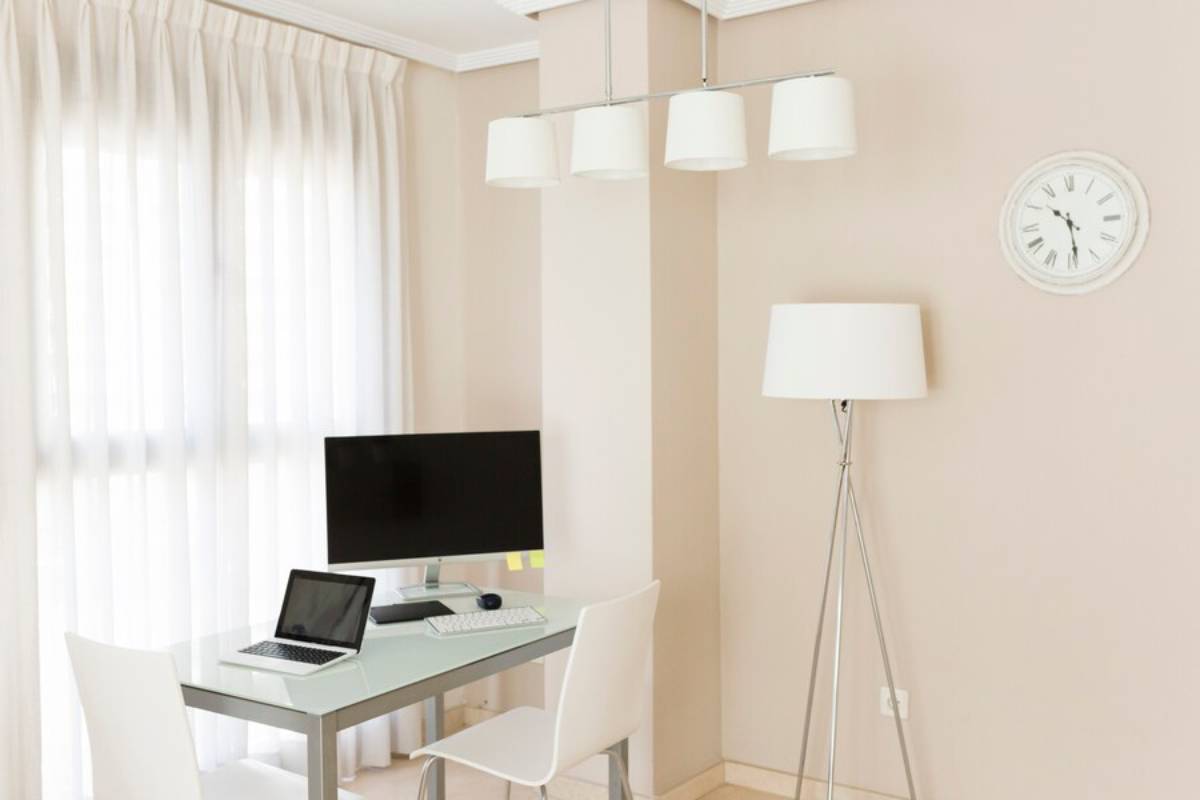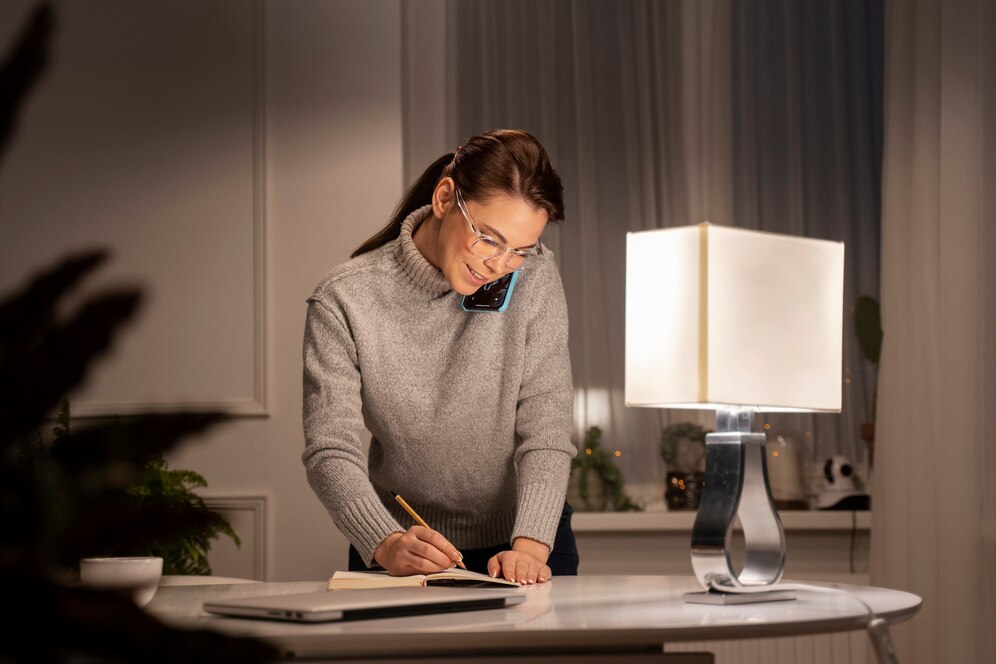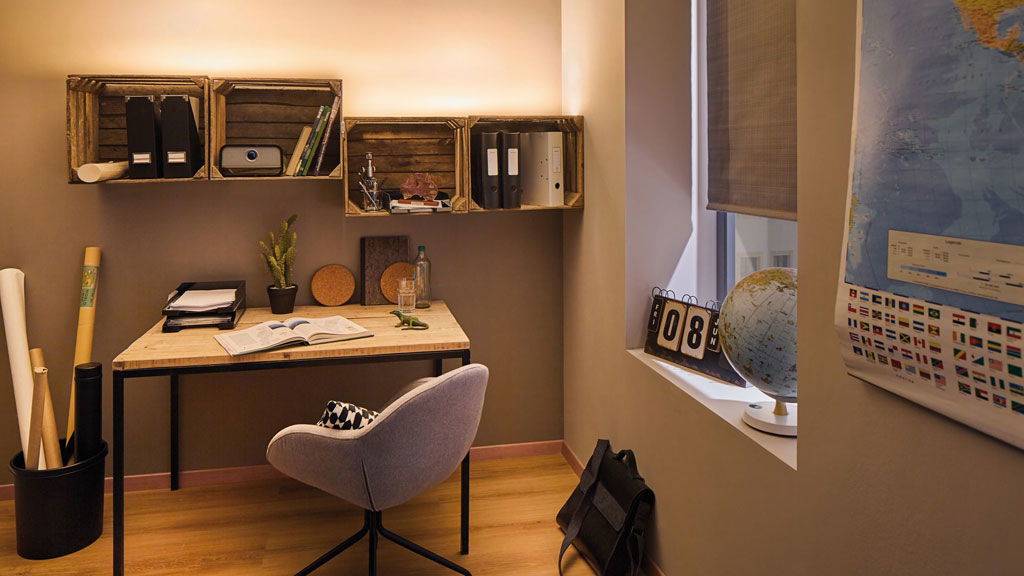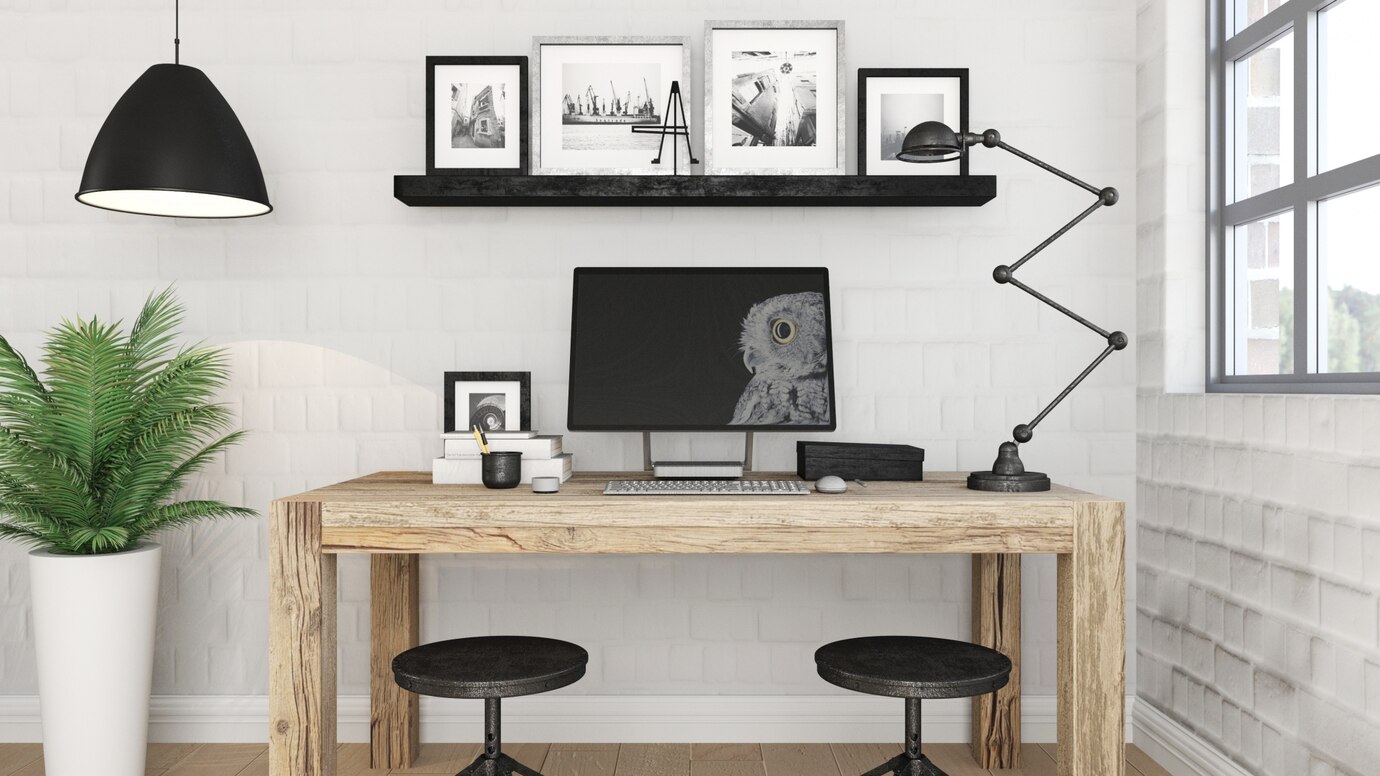
Lighting Hacks to Improve Productivity at Home
In today’s busy world, homes are now multi-functional. They serve as a sanctuary, a place to relax, and more often, a workspace. As remote work grows, it’s crucial to create a space that boosts productivity. Many people think about ergonomic furniture, technology, and décor. However, lighting is a key part of workspace optimisation that often gets overlooked.
Lighting significantly impacts mood, energy levels, and cognitive performance. Bad lighting can lead to eye strain, tiredness, and less productivity. On the other hand, a bright workspace can boost focus and creativity. In this blog, we’ll share lighting hacks that can boost productivity in your home office. No matter if you’re a seasoned remote worker or a beginner, these tips can make your workday more efficient and inspiring.
Key Benefits of Optimising Home Office Lighting

The Science Behind Lighting and Productivity
Lighting is key for your body’s circadian rhythm. This internal clock affects your sleep-wake cycle and how alert you feel. Exposure to natural light during the day helps keep this rhythm in balance, boosting alertness, mood, and energy.
Research from the American Academy of Sleep Medicine shows that bright, natural light during the day improves thinking skills and reduces tiredness. On the other hand, dim or artificial light can mess with your circadian rhythms. This can result in bad sleep, low energy, and decreased productivity.
Key Takeaway: To boost productivity, set up lighting that matches your body’s natural rhythms. This means getting as much daylight as possible at work. Then, in the evening, we gradually dim the lights to help the body know it’s time to rest.
Real-Life Applications and Data-Backed Insights
Let’s consider a real-world example: a tech company in the UK revamped its office layout by maximising access to natural light. The results were impressive:
- 15% increase in productivity
- 25% reduction in absenteeism
- Higher employee satisfaction scores
These figures apply to corporate settings, but the principles work for home offices too. Place your desk by a window or use mirrors to reflect light. This can help create a productivity-boosting effect.
Step-by-Step Guide to Optimising Your Workspace Lighting
Step 1: Assess Your Current Lighting Situation
Before making changes, evaluate the current lighting conditions in your home office. Consider the following factors:
- Natural Light: How much sunlight does your workspace receive? Is it evenly distributed, or are there dark corners?
- Artificial Lighting: Identify the types of bulbs you are using (LED, incandescent, or fluorescent) and their colour temperature.
- Glare and Shadows: Check for any distracting glare on your screens or harsh shadows on your desk.
Pro Tip: Use a light meter app on your phone to measure the brightness (lux) levels in your office. For optimal productivity, aim for 300–500 lux on your desk.
Step 2: Maximise Natural Light
Natural light is the most effective lighting source for boosting productivity. Here’s how to make the most of it:
- Position Your Desk Near Windows: Place your desk parallel to or facing a window to reduce glare and benefit from direct sunlight.
- Use Sheer Curtains or Blinds: If direct sunlight creates glare on your screen, opt for sheer curtains or blinds to diffuse the light without darkening the room.
- Leverage Reflective Surfaces: Use mirrors or glossy finishes on furniture to reflect and distribute natural light throughout the room.
Pro Tip: If you don’t have access to ample natural light, consider installing a sun lamp or light therapy box. These devices simulate daylight and can boost mood and productivity.
Step 3: Layer Your Lighting
Good lighting design uses different light sources. This helps create a balanced and well-lit space. Combine these three types of lighting:
Ambient Lighting:
- Provides overall illumination to the room.
- Use ceiling fixtures, pendant lights, or wall sconces.
- Aim for evenly distributed brightness to reduce eye strain.
Task Lighting:
- Focused light for specific work areas like your desk or reading corner.
- Choose adjustable desk lamps or under-cabinet lighting.
- Helps prevent eye fatigue during close-up work.
Accent Lighting:
- Adds visual interest and reduces harsh shadows.
- Use floor lamps, wall washers, or LED strip lights.
- Enhances the overall ambience of the workspace.
Pro Tip: Use different types of lighting. This stops dark spots and makes your workspace more dynamic and adaptable.
Step 4: Choose the Right Bulbs
The colour temperature and brightness of your light bulbs significantly impact productivity. Here’s how to choose the right bulbs:
- Cool White (4000K–5000K): Ideal for workspaces, as it mimics natural daylight and promotes alertness and concentration.
- Warm White (2700K–3000K): Suitable for breakout areas or relaxation zones. It creates a calming atmosphere.
- LED Bulbs: LEDs are energy-efficient and last a long time. They come in different brightness and temperature options.
Pro Tip: Opt for dimmable LED bulbs, allowing you to adjust brightness according to the time of day.
Step 5: Implement Smart Lighting Solutions
Smart lighting offers customisation and convenience, enhancing both productivity and well-being. Here’s how to leverage it:
- Smart Bulbs and Fixtures: Install smart bulbs with adjustable colour temperature and brightness. Use voice commands (Alexa, Google Home) to modify the lighting.
- Automated Schedules: Program your lights to follow your daily routine, mimicking sunrise and sunset patterns.
- Remote Control and Dimming: You can use mobile apps to change lighting settings during the day. This helps meet your changing needs.
Pro Tip: Smart bulbs with circadian settings change their light temperature throughout the day. This helps support better sleep patterns.
Additional Expert Tips & Common Mistakes to Avoid
Expert Tips
- Eliminate Glare: Use anti-glare screens or position lights at a 45-degree angle to prevent reflections on your monitor.
- Use Colour Psychology: Cooler, bluish light helps with focus and alertness. Warmer tones, on the other hand, bring a sense of calm.
- Balance Brightness: Avoid excessively bright lighting, which can cause headaches and eye fatigue.
Common Mistakes to Avoid
- Neglecting Task Lighting: Relying solely on overhead lighting can cause eye strain. Incorporate task lamps for focused illumination.
- Overlooking Colour Temperature: Mismatched colour temperatures can create an incohesive atmosphere. Keep lighting consistent.
- Ignoring Lighting Placement: If lights are not positioned correctly, they can cause shadows and glare. Test different placements for optimal coverage.
Advanced Insights / Expert Recommendations

Circadian Lighting Systems
Circadian lighting changes brightness and colour temperature during the day. It syncs with your body clock. These systems can:
- Boost alertness in the morning with bright, cool light.
- Transition to warmer, dimmer light in the evening, preparing your body for rest.
Biophilic Design with Lighting
Biophilic design incorporates natural elements to promote well-being. Mix lighting with plants, natural textures, and water elements. This combination helps create a calming and productive space.
Lighting Hacks to Improve Productivity at Home: Brighten Your Workday

Improving your home office lighting can really boost productivity. It also helps you feel better and makes your workspace more inspiring. Use these lighting tips to change your office into a hub of productivity. Use a mix of ambient and task lighting. Also, add smart lighting systems for great results.
Start today by checking your current lighting setup. Then, apply these strategies. Your mood, energy levels, and productivity will thank you.
What lighting changes have you made to improve your home office productivity? Share your experiences and insights in the comments below!

